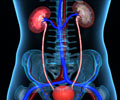Injection of a single cell taken from cultured LA7 cells into mouse breast tissue can seed a new mammary carcinoma.
Nobel Laureate Dr. Renato Dulbecco has demonstrated that an injection of a single cell taken from cultured LA7 cells into mouse breast tissue can seed a new mammary carcinoma.
The results of the efforts of an international team of researchers led by Dr. Dulbecco, President Emeritus and Distinguished Resident Professor at the Salk Institute for Biological Studies, support the observation that though cancer stem cells are rare, in the bulk of a tumour, a single cancer stem cell is sufficient to initiate and maintain a malignant tumour.“We can use single cancer stem cells to study the dynamics and behaviour of cancer stem cells and their role in solid tumour formation at the single cell level,” says lead author Dr. Ileana Zucchi, a molecular cancer biologist at the Institute for Biological Technology (ITB-CNR) in Milan, Italy.
The researchers believe that a model of cancer stem cell system may allow them to identify genes and proteins that will help with the search for human breast cancer stem cells in the future.
“As we learn more about tumour formation at the single cell level in tissue, we may be able to specifically target cancer stem cells for destruction while leaving the normal stem cells in the body intact,” hopes Zucchi.
The researchers say that it is well known that tumour cells and stem cells share many properties, which is characterised by their abilities to divide and generate both new stem cells and specialized cell types. However, there exists a major difference between the two.
“Although normal stem cells show significant stem cell renewal, they are usually not associated with uncontrolled cell proliferation when they reside within their normal environment or niche. Cancer stem cells, however, are not equally responsive to environmental cues that repress uncontrolled cell proliferation of the stem cells,” explains Zucchi.
Advertisement
“If tumour induction was dependent on injecting more than one cell, it would be difficult to determine whether cells that appear to be resistant to these conditions are simply cell types different from cancer stem cells,” Zucchi says.
Advertisement
Source-ANI
LIN/M











